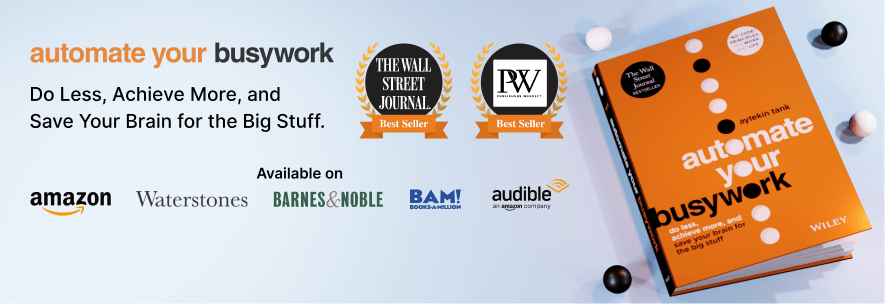Conversational user interfaces (UIs) let humans interact with computers, software, or online services using natural language. They rely on text or voice inputs, making the interaction feel more like a conversation than a simple menu-based one. Think of them as digital assistants that understand everyday language and respond fluidly and intuitively. Conversational interfaces have become vital to e-commerce, mobile apps, and customer support as technology advances. From basic chatbots to voice platforms, conversational interfaces are everywhere, and they’re here to stay.
In today’s fast-paced world, businesses are looking for more efficient ways to engage customers and streamline operations. Conversational interfaces deliver a personalized, convenient, and accessible approach, making them invaluable in retail, healthcare, and education.
In e-commerce, they can guide users through product searches or checkouts, while in customer support, they can reduce wait times by addressing common questions instantly. Education platforms use conversational UIs to answer student queries and provide personalized learning paths. As a result, industries have quickly adopted conversational interfaces, reshaping how users interact with digital systems and setting a new standard for accessible, on-demand communication.
How do conversational interfaces work?
Behind every conversational interface is a combination of artificial intelligence (AI), machine learning (ML), and natural language processing (NLP). When a user types or speaks, NLP algorithms interpret the intent and transform the request into structured data. Next, AI-driven logic finds the best response, often using ML models trained on large datasets. Finally, the interface delivers a reply — either text or synthesized speech — that feels humanlike. This input recognition, interpretation, and response cycle repeats until the conversation ends. Advances in AI and NLP have made this process smoother, allowing conversational interfaces to handle increasingly complex tasks and scenarios relatively easily.
Think of it like a friendly chat: You say something, and the system deciphers it, decides how to respond, and then replies. With conversational UI, that “other party” is a program that learns over time. More interactions mean better interpretation of context and nuance. This flexibility makes conversational interfaces highly adaptable, whether as simple FAQ bots or multilingual assistants for global users. It also means you don’t have to be an AI expert to deploy one; many platforms offer user-friendly tools, bridging the gap between complex algorithms and the everyday needs of modern businesses.
What is the difference between NLP and conversational interfaces?
The main difference between NLP and conversational interfaces is their scope. NLP, or natural language processing, is the broad technology that helps machines understand and generate human language. It includes tasks like sentiment analysis, language translation, and text classification. Conversational interfaces, however, are applications that sit on top of NLP and other AI technologies to enable real-time interactions.
While NLP interprets user input, conversational interfaces manage dialogue flow, context, and user experience design. Consider NLP the engine of a car, providing power and capability. The conversational interface is the car’s design — its steering wheel, dashboard, and seats — that enables you to drive. Both are essential, but each serves a distinct role.
NLP focuses on language comprehension, converting sentences into machine-readable data. Meanwhile, conversational interfaces turn those interpretations into user experiences that feel natural and intuitive. Without NLP, a chatbot or voice assistant wouldn’t understand human language, and without a good conversational UI, users wouldn’t enjoy or trust the interaction. This synergy makes modern digital assistants effective in everyday life and business applications.
5 examples of conversational interfaces
Conversational interfaces take many forms, from simple website chatbots to complex smartphone virtual assistants. Any platform that interacts via text or voice qualifies as a conversational interface. Below are five popular examples that showcase how these tools have become integral to daily life and corporate operations.
Whether you’re asking Siri for weather updates or relying on a chatbot interface for tech support, conversational UIs are geared to make each exchange feel more human. Let’s take a closer look at the diversity of these interfaces and how they cater to different needs and audiences.
- Customer service chatbots: Businesses embed these on websites to answer FAQs, guide sales, or resolve simple issues.
- AI agents: These intelligent systems use machine learning and natural language understanding to provide context-aware, adaptive interactions for tasks like decision-making and personalized assistance.
- Virtual assistants (Siri, Google Assistant): These smartphone-based AIs handle scheduling, reminders, and personalized searches.
- Voice-enabled home devices (Alexa): Smart speakers allow users to manage home automation, music, and news updates through voice commands.
- Workplace messaging bots (Slack, Teams): These bots automate routine tasks, manage schedules, and integrate with productivity tools.
Benefits of conversational interfaces for businesses
Conversational user interfaces offer far more than a trendy design for organizations — they can fundamentally alter customer engagement, support systems, and internal processes. Whether you’re a small startup or a large enterprise, these interfaces can simplify complex workflows and increase user satisfaction.
From cost savings to enhanced inclusivity, conversational UIs have the potential to transform the way businesses operate and scale in an increasingly digital world. Here are some key benefits that span industries and use cases.
- Enhanced engagement: Personalized, real-time exchanges boost conversion rates, user satisfaction, and brand loyalty.
- Lower costs: Automated systems handle repetitive inquiries, freeing human agents for more complex tasks and reducing overhead.
- Round-the-clock service: Chatbots operate 24-7, offering immediate assistance to customers worldwide.
- More effortless scalability: Expanding to serve more users is simpler when you rely on AI-driven solutions.
- Greater accessibility: Voice commands and text-based chats support users with varying abilities, ensuring no one is left behind.
Future of conversational interfaces
As AI, NLP, and related technologies evolve, the future of conversational UI promises even more innovations. Some early adopters blend augmented and virtual reality with conversational interfaces for immersive experiences, like virtual stores or guided training environments. In healthcare, advanced chatbots can help triage patients, monitor symptoms, and offer proactive care tips. Meanwhile, educational platforms deploy chatbots as digital tutors, customizing lessons and quizzing students in real time. These trends illustrate how conversational interfaces will continue to shape various fields, providing efficient and user-centric solutions.
Another leap forward is the rise of multimodal interfaces that blend text, voice, and visual cues. By letting users switch input methods on the fly, these systems enhance accessibility and user satisfaction. In smart homes, future conversational interfaces could proactively adjust lighting, temperature, or security settings based on learned preferences.
The ultimate goal is to create intuitive interactions where users barely notice the technology. We’re moving beyond simple Q and A bots toward assistants that anticipate needs and seamlessly deliver solutions, revolutionizing how we live, work, and learn.
Conversational interfaces have evolved from niche curiosities into essential tools that shape modern interactions — their ability to deliver user-friendly, immediate, personalized service benefits in every sector, from e-commerce to healthcare.
As AI and NLP advance, expect more context-aware and proactive solutions that redefine how we handle daily tasks. If your organization hasn’t yet explored chatbots, voice assistants, or AI-driven agents, now is the time to see what they can do. With the right strategy, conversational interfaces enhance user engagement, transform digital experiences, and keep businesses agile in an ever-changing technological landscape.
Integrating conversational UI into your operations opens new doors for customer engagement and operational efficiency. Whether you’re a seasoned enterprise or just starting out, now is the ideal time to explore how these interfaces can simplify your workflows and elevate user satisfaction. Adopting these tools today can position your brand at the forefront of tomorrow’s customer experience.

































Send Comment: